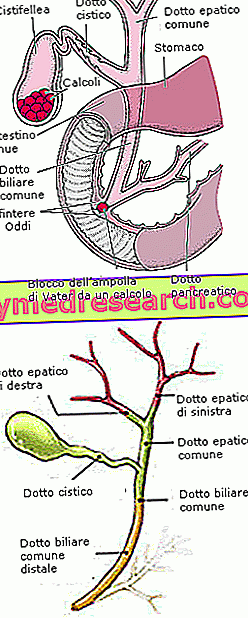Generality
The ligaments of the ankle are the bands of fibrous connective tissue, which connect the malleoli of the tibia and fibula with the bones of the tarsus called astragalus, calcaneus and navicular bone.
Ankle ligaments can be divided into two groups: deltoid (or medial) ligaments and lateral ligaments. There are four deltoid ligaments and they reside on the inner side of the ankle; the side ligaments, instead, are three and take place on the external side of the ankle.
The function of the ankle ligaments is to guarantee stability to the latter.
Ankle ligaments can be injured, such as sprains or breaks.
Brief anatomical reference of the ankle
Located between the leg and the foot, the ankle is the synovial joint of the human body, which acts as a junction point between the distal ends of the tibia and fibula and the upper portion of the talus .
Tibia and fibula (or fibula) are the bones that make up the skeleton of the leg ; the astragalus, on the other hand, is one of the 7 bones of the tarsus of the foot.
The ankle joint, also known as the talocrural joint, allows the foot to perform plantarflexion, dorsiflexion, eversion and inversion movements.
- Dorsiflexion : it is the movement that allows you to lift your foot and walk on your heels.
- Plantarflexion : it is the movement that allows you to point your foot towards the floor. The human being performs a plantarflexion movement when he tries to walk on his toes.
- Eversion : means raising the side edge (ie the outer edge) of the foot, keeping the medial edge (ie the inner edge) on the floor.
- Inversion : it means raising the medial edge of the foot, keeping the side edge on the floor.
What are ankle ligaments?
The ligaments of the ankle are those bands of fibrous connective tissue, which hold the distal ends of the tibia and fibula to the tarsus bones known as astragalus, calcaneus and navicular bone.
There are two groups of ligaments in the ankle: the deltoid ligaments, also known as medial ligaments, and the lateral ligaments .
Anatomy
There are four deltoid (or medial) ligaments on the inner side of the ankle; the side ligaments, instead, are three and take place on the external side of the ankle.
DELTOIDE OR MEDIAL TIES
The 4 deltoid or medial ligaments of the ankle originate at the level of the tibial malleolus (or medial malleolus ); from here, two reach the astragalus, one the heel and one the navicular bone.
The medial ligaments from the tibial malleolus to the talus are the so - called talo-tibial anterior ligament and the so - called posterior talo-tibial ligament ; the medial ligament that goes from the tibial malleolus to the heel is the so - called tibio-calcaneal ligament ; finally, the medial ligament from the tibial malleolus to the navicular bone is the so - called tibio-navicular ligament .
What is the tibial malleolus?
The tibial malleolus (or medial malleolus) is the observable bony prominence on the inner side of each ankle. It belongs to the tibia, which is the most important of the two bones of the leg.
The tibial malleolus, together with the peroneal malleolus located on the opposite side, is fundamental in giving stability to the ankle joint.

LATERAL LINKS
The 3 lateral ligaments of the ankle originate at the level of the peroneal malleolus (or lateral malleolus ); from here, two reach the talus and one the heel.
The medial ligaments that from the peroneal malleolus go up to the astragalus are known as the anterior talo-fibular ligament and the posterior talo-fibular ligament, while the medial ligament that goes from the tibial malleolus to the calcaneus is called the calcaneo-fibular ligament .
What is the peroneal malleolus?
The peroneal malleolus (or lateral malleolus) is the observable bony prominence on the outer side of each ankle. As can easily be guessed from its name, it belongs to the fibula.
We have already talked about the function of the peroneal malleolus when describing the function of the tibial malleolus.

Function
The ankle ligaments have the task of giving stability to the ankle joint, during plantarflexion, dorsiflexion, eversion and inversion of the foot.
Giving stability means that they prevent the ankle from becoming the protagonist of excessive movements, out of the norm. The latter, in fact, could cause damage to the bones involved in the joint.
Associated pathologies
Ankle ligaments can be subject to stretching or breakage .
Stretching or breaking of ankle ligaments are injuries that result from improper movements of the ankle joint. Improper ankle movements, from which ligament injuries originate, are called ankle sprains .
Most episodes of ankle sprain involve the involvement of lateral ligaments. This is due to the fact that, between the two groups of ligaments of the ankle, the lateral ligaments are the weakest.



